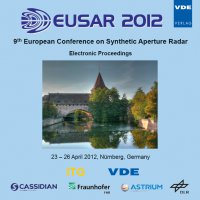Multi-Baseline UAVSAR Repeat Pass Data of the Harvard Forest
Konferenz: EUSAR 2012 - 9th European Conference on Synthetic Aperture Radar
23.04.2012 - 26.04.2012 in Nuremberg, Germany
Tagungsband: EUSAR 2012
Seiten: 4Sprache: EnglischTyp: PDF
Persönliche VDE-Mitglieder erhalten auf diesen Artikel 10% Rabatt
Autoren:
Hensley, Scott; Michel, Thierry; Neumann, Maxim; Lavalle, Marco; Ahmed, Razi; Muellerschoen, Ron; Chapman, Bruce; Oveisgharan, Shadi; Jones, Cathleen (Jet Propulsion Laboratory California Institute of Technology, Pasadena, CA, USA)
Lombardini, Fabrizio (University of Pisa, Italy)
Siqueira, Paul (University of Massachusetts at Amherst)
Inhalt:
Quantification of the various components of the carbon cycle budget is key to improved climate modeling and projecting anthropogenic affects on climate in the future. Estimating the levels of above ground biomass contained in the world’s forests that comprise 86% of the planet’s above ground carbon and monitoring the rate of change to these standing stocks resulting from both natural and anthropogenic disturbances is necessary to solving the carbon cycle sink. Remote sensing is the only viable means of obtaining a global inventory of forest biomass at the hectare scale. The most promising means of obtaining remotely sensed biomass measurements involve using either lidar or radar measurements of vegetation structure coupled with allometric relationships. We have collected repeat-pass L-band fully polarimetric radar data at multiple spatial and temporal baselines to investigate the tree height and structure measurements using polarimetric interferometry and tomography techniques. This paper will discuss this experiment and comparison with lidar data.


